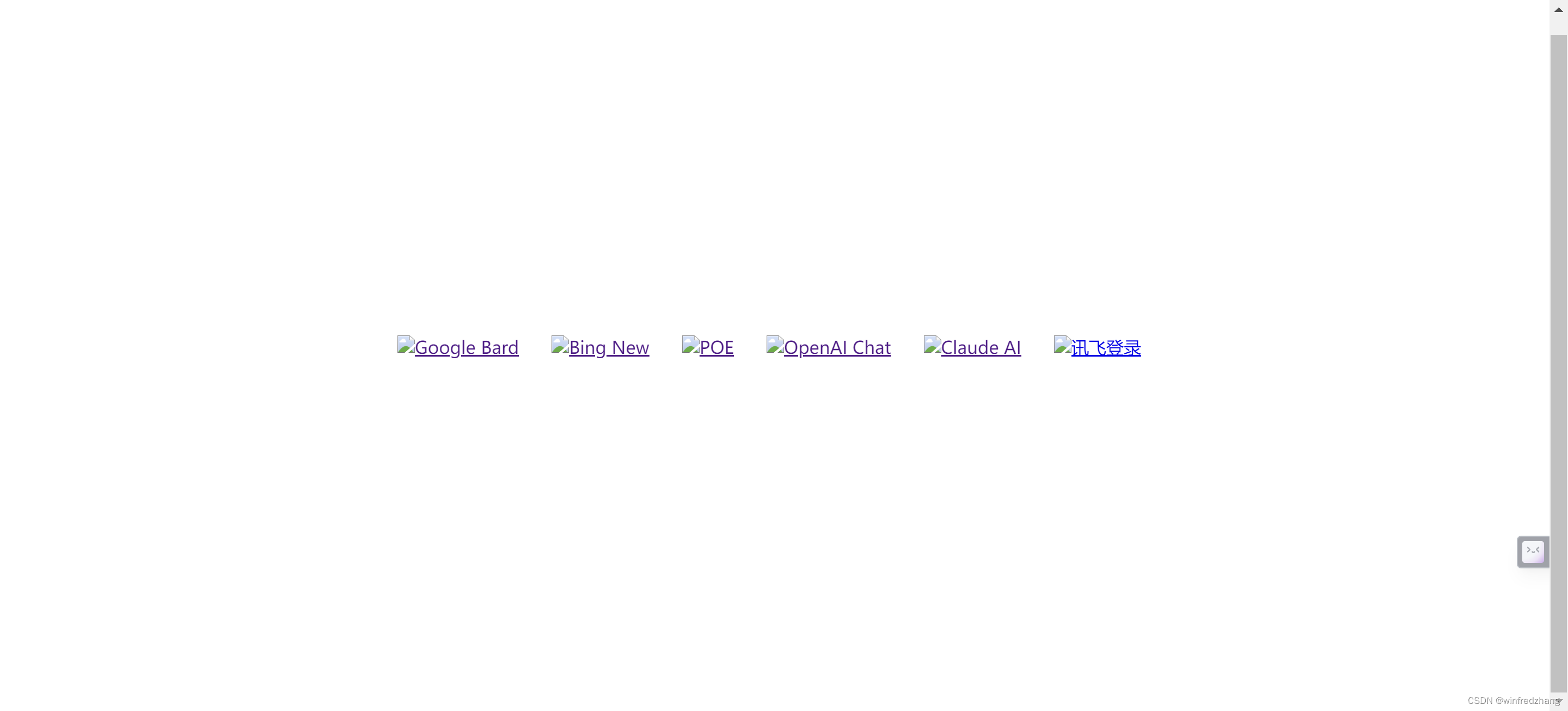如何使用 Node.js 发布静态网页
在本文中,我们将介绍如何使用 Node.js 来发布静态网页。我们将创建一个简单的 Node.js 服务器,将 HTML 文件作为响应发送给客户端。这是一个简单而灵活的方法,适用于本地开发和轻量级应用。
1、创建静态网页:
例如静态网页websites.html。创建一个包含众多人工智能的链接和图标网页。
<!DOCTYPE html>
<html lang="en">
<head>
<meta charset="UTF-8">
<title>Website Links</title>
<style>
body {
display: flex;
justify-content: center;
align-items: center;
height: 100vh;
}
ul {
list-style-type: none;
padding: 0;
display: flex;
flex-wrap: wrap;
justify-content: center;
align-items: center;
}
li {
display: flex;
align-items: center;
margin: 10px;
}
img {
width: 100px;
height: 100px;
margin-right: 10px;
}
</style>
</head>
<body>
<ul>
<li>
<a href="https://bard.google.com" target="_blank">
<img src="./icons/bard.svg" alt="Google Bard">
<!-- 空链接文本 -->
</a>
</li>
<li>
<a href="https://bing.com/new" target="_blank">
<img src="./icons/bing.png" alt="Bing New">
<!-- 空链接文本 -->
</a>
</li>
<li>
<a href="https://poe.com" target="_blank">
<img src="./icons/poe.svg" alt="POE">
<!-- 空链接文本 -->
</a>
</li>
<li>
<a href="https://chat.openai.com" target="_blank">
<img src="" alt="OpenAI Chat">
<!-- 空链接文本 -->
</a>
</li>
<li>
<a href="https://claude.ai" target="_blank">
<img src="" alt="Claude AI">
<!-- 空链接文本 -->
</a>
</li>
<li>
<a href="https://passport.xfyun.cn/" target="_blank">
<img src="icons/xfxh.svg" alt="讯飞登录">
<!-- 空链接文本 -->
</a>
</li>
</ul>
</body>
</html>2. 编写server.js程序,构建一个简单的静态文件服务器。
注意: fs.readFile(‘websites.html’中的html就是以上编写的网页,也就是要发布的网页。
const http = require('http');
const fs = require('fs');
const server = http.createServer((req, res) => {
if (req.url === '/') {
fs.readFile('websites.html', (err, data) => {
if (err) {
res.writeHead(500, { 'Content-Type': 'text/plain' });
res.end('Internal Server Error');
} else {
res.writeHead(200, { 'Content-Type': 'text/html' });
res.end(data);
}
});
} else {
res.writeHead(404, { 'Content-Type': 'text/plain' });
res.end('Not Found');
}
});
server.listen(3000, () => {
console.log('Server is running on http://localhost:3000');
});3、将以上websits.html和server.js存放在同一文件夹下。用以下命令发布:
node server.js4、效果如下:

Node.js 发布网页的好处及使用场景
发现使用 Node.js 发布网页的好处以及适用的场景。我们将探讨 Node.js 在处理并发连接、提供静态文件、灵活路由和快速开发方面的优势。了解这些优点后,你将能够更好地决定何时选择 Node.js 作为你的网页发布工具。
构建动态网页服务器:Node.js 的更高级用法
进一步探索使用 Node.js 构建动态网页服务器的更高级用法。我们将了解如何使用模板引擎、处理表单提交、处理 REST API 请求等。通过这些技巧,你可以创建具有动态功能的强大网站。
提高性能:使用 Node.js 发布网页的最佳实践
了解如何通过一些最佳实践来提高使用 Node.js 发布网页的性能。我们将讨论缓存机制、压缩资源、并发处理、负载均衡等技术。这些最佳实践将帮助你优化你的网页服务器,提供更快速和可靠的用户体验。